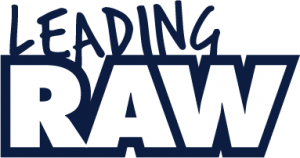Tips, Tricks, and Why You Should Start
If you’re a puppy parent, you’re probably looking for the best way to raise a healthy, happy dog. One of the most exciting ways to nourish your new pup is by feeding them a raw diet! Raw feeding, often referred to as a biologically appropriate raw food (BARF) diet, has become a popular choice for many dog owners. It’s natural, nutritious, and can lead to some pretty amazing benefits. But where do you start, and how do you do it right? Let’s dive into some tips and tricks to make raw feeding your puppy as easy as possible!
Why Raw Feed Your Puppy?
Before we jump into the how-to’s, let’s talk about why raw feeding is such a great choice for your puppy.
- Natural Nutrition: Raw food is packed with the nutrients your puppy needs to grow strong and healthy. Think lean meats, bones, organs, and veggies, all of which help support your pup’s immune system, muscles, and bones.
- Better Digestion: Puppies on a raw food diet typically experience better digestion. The natural enzymes in raw food can aid in digestion, leading to firmer stools and less frequent digestive upset.
- Shiny Coat and Healthy Skin: The essential fatty acids found in raw food can make a huge difference in your puppy’s coat. You might notice a shinier, healthier-looking fur coat that’s softer and free from dry patches or itching.
- Strong Teeth and Gums: Raw bones are a fantastic way to promote good dental health. Chewing on bones helps scrape tartar off teeth, keeping your puppy’s smile sparkling white. Plus, it can help satisfy your pup’s natural chewing instincts!
- Increased Energy and Vitality: Puppies thrive on the natural, whole-food nutrients in raw diets. You might find your puppy has more energy, is more playful, and seems to be growing stronger with each passing day.
When Should You Start Raw Feeding?
If you are thinking, “when is the right time to start feeding my puppy raw food?” great question! You’ll want to start feeding your pup raw food when they have been weaned from their mother or at around 12 weeks of age or when they weigh about 1kg. At this stage, your puppy’s digestive system is ready to handle raw food, and they can begin to get all the essential nutrients they need to grow into a strong adult dog.
Raw Feeding Tips for Your Puppy
Now that you know the benefits of raw feeding your puppy, here are some tips and tricks to make raw feeding a breeze:
- Start Slow and Gradual: If your puppy has been eating kibble or wet food, transitioning to raw food needs to be done gradually. Start by mixing a small amount of raw food with their current food, slowly increasing the raw portion over a 2-week period. This helps prevent any stomach upset.

- Variety is Key: Just like people, dogs need a balanced diet to stay healthy. Leading Raw offers a variety of proteins (chicken, salmon, beef and lamb) and organ meats for extra nutrients. Providing your puppy with the full spectrum of proteins, fats, and nutrients. And we haven’t forgotten the veggies and superfoods!
- Meat, Bones, and Organs: A balanced raw diet for puppies should include 70% muscle meat, 10% offal/ organs, 10% bones, and 10% fruit and vegetables. The bone content helps your puppy with calcium, while organs are full of essential vitamins and minerals.
- Watch Portions: Puppies are growing fast, and they need the right amount of food to fuel their energy. A good rule of thumb is to feed 4% of your puppy’s body weight per day. We have a feeding guide available on our website and product boxes. This is just a guide, depending on your puppies metabolism, energy level and breed you may need to feed more food. If you’re ever unsure on how much to feed your puppy, reach out to our team here.
- Keep It Fresh and Clean: Just like human food, raw food should be kept fresh. Store it in the freezer to prevent bacteria growth, thaw the food in the fridge 24 hours before feeding. Thawed raw food is safe in an airtight container, in the fridge for up to 48 hours. After feeding your dog raw food, wipe down all surfaces and wash an utensils, bowls and hands that came in contact with raw food.
- Consult A Canine Nutritionist or Holistic Vet: Before you begin raw feeding, especially if you have concerns about your puppy’s specific needs, it’s a great idea to consult a canine nutritionist or holistic vet. They can offer guidance on portion sizes, nutrients, and how to balance the diet for your puppy’s breed and age.
What to Avoid When Raw Feeding a Puppy
- Cooked Bones: Never feed your puppy cooked bones, as they can splinter and cause serious injury to their digestive tract.
- Processed Meat: Stick to fresh, whole foods rather than processed meats (like deli meats), as they can contain unhealthy preservatives and salt.
- Toxic Foods: Certain foods like onions, grapes, and chocolate are toxic to dogs and should always be kept out of their diet.
Why Raw Feeding Is Worth It
Raw feeding your puppy is an investment in their long-term health and happiness. The benefits are undeniable: better digestion, a stronger immune system, a shiny coat, and a puppy who feels like a million bucks! By starting raw feeding at around 12 weeks or 1kg, you’re setting your puppy up for a life of vibrant health and vitality.
Feeding your puppy raw food might require some effort and research at the start, but with the right approach, it becomes second nature. Plus, nothing beats the joy of watching your puppy grow up strong and healthy. All thanks to the power of natural, raw nutrition.
Happy feeding, and enjoy the journey with your happy, healthy puppy! 🐾
